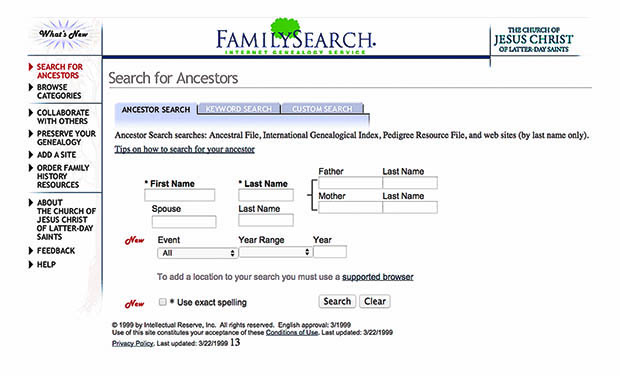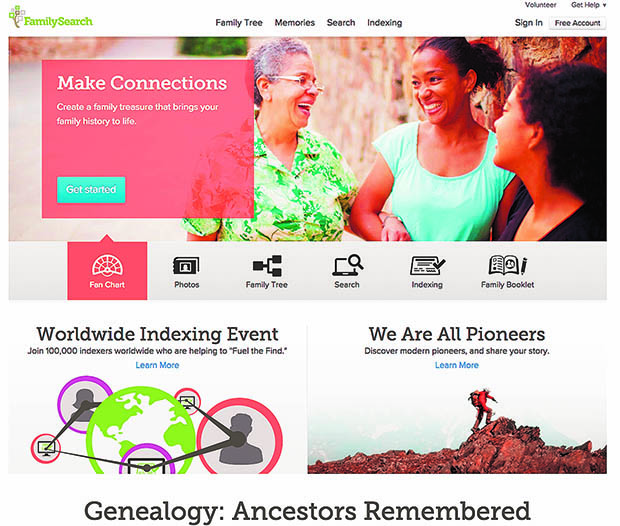FamilySearch Undergoing Transformation
Contributed By Paul Nauta, Church News contributor

FamilySearch is undergoing a fundamental transformation by pushing toward accomplishing many lofty goals.
Article Highlights
- Since 2013, FamilySearch.org has seen a 234 percent increase in its LDS patrons and a whopping 1,035 percent increase from the non-LDS segment.
- FamilySearch is expanding its camera team worldwide.
- They are also developing many advancements in indexing.
“[FamilySearch] is a different organization today—focused on the customer and quickly delivering value. Companies that change the fastest to meet customer needs today are the most effective.” —Robert Kehrer, senior product manager for FamilySearch.org’s search experience
Related Links
PROVO, UTAH
Fifteen years ago Apple was a beleaguered tech company. Today, it is a transformative leader across multiple industries (computers, smartphones, music, movies, wearable technology). Robert Kehrer, senior product manager for FamilySearch.org’s search experience, believes FamilySearch is also undergoing a fundamental transformation.
He knows because as a manager at Apple for most of the last decade, he participated in the change and clearly sees the similarities. Brother Kehrer was a keynote speaker at the BYU Family History and Genealogy Conference Thursday morning, July 30.
“[FamilySearch] is a different organization today—focused on the customer and quickly delivering value,” he said. “Companies that change the fastest to meet customer needs today are the most effective.” Brother Kehrer said that FamilySearch is seeking to change the very landscape of genealogy.
He received generous “oohs” and “ahs” and applause from attendees as he outlined FamilySearch.org’s priorities for the near future and pointed out some of the latest features on the website. He explained the current focus of much of the product development is focused on the following customer needs:
• Providing more records—faster.
• The ability to preserve and share personal family records online.
• The ability to do more on cell phones and tablets.
• Creating a more accurate and full-featured search.
• Allowing patrons to easily and completely gather online sources right at their fingertips.
• Ensuring the FamilySearch Family Tree is “genealogically sound.”
• Expanding to work with partners and industry leaders to tackle the ominous needs of the marketplace.
Since 2013, FamilySearch.org has seen a 234 percent increase in its LDS patrons and a whopping 1,035 percent increase from the non-LDS segment. He believes these increases are due to improved patron experiences. Record collections on the site have nearly doubled since 2012 (1,033 to 2,019), and the searchable indexed names have grown from 750 million in 2010 to 5.2 billion today.
FamilySearch is expanding its 293 digital camera teams worldwide, and the effort to digitally convert the microfilm in the Granite Mountain Records Vault is forging ahead—adding new content online at an impressive rate.
FamilySearch’s new indexing program—a community-based initiative to engage online volunteers to make the deluge of digital record images easily searchable by name and other variables online—is currently being rolled out in waves.
Since it will be web-based, the biggest selling point is that it will run on mobile devices, such as tablets and iPads. It’s also collaborative, meaning volunteers and organizations can create their own groups to tackle projects of interest, track their progress, and message each other.
And the new interface will enable users to reorient the way they view images and enter data according to personal preferences.
He also demonstrated automated indexing, a technology FamilySearch is developing that scours ASCI (typeset) type historic records and intuitively “indexes” them by pulling researchable data out of the document.
This will vastly increase the production of indexed collections and free up volunteers to index older, handwritten record sets.
As its product manager, Brother Kehrer is responsible for FamilySearch.org’s search systems. He demonstrated FamilySearch’s evolving hinting feature—a service that automatically scours the rapidly growing body of historical records for a user’s ancestors in the FamilySearch Family Tree and presents their records to the user.
The location-specific research pages, accessed through the map, bring together location-relevant content from across the FamilySearch site. Image views now show the indexed data at the bottom of the screen. Seeing the image and the index together on the same screen significantly enhances user efficiency.
Coming soon are some impressive tools and more functionality for the FamilySearch mobile apps, Memories feature, online catalog, and more partner initiatives. Advancements in search will be applied to all these applications. Microfilm images and indices will be accessible directly from the FamilySearch catalog and will enable users to quickly browse through digital images or search the film’s indexed records.

Screen capture of the FamilySearch.org website as it appeared in March 2000. Photo credit web.archive.org.

Screen capture of the FamilySearch.org website as it appears today.
